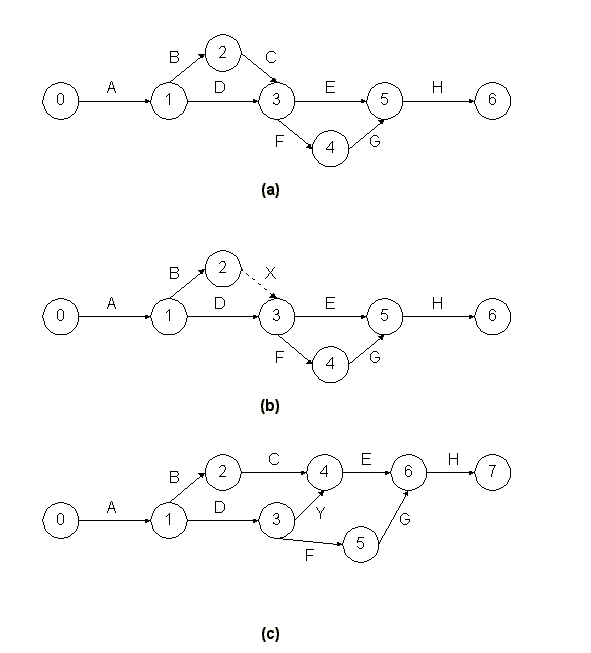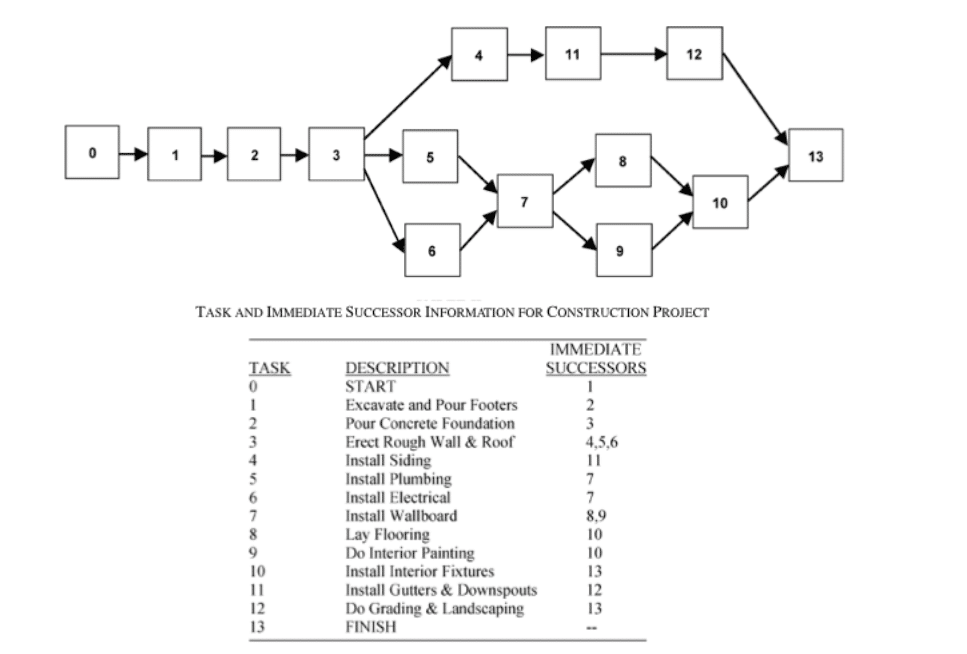The Critical Path Method (CPM) was developed by the DuPont and Remington Rand Companies as a way for planning and scheduling plant maintenance and construction projects utilising computers. The successful application of CPM methodologies by its developers led to the extensive use of CPM on government and industry projects.
CPM uses a network diagram to graphically illustrate the major activities of a construction project and to show the links between activities. CPM assigns each activity a single fixed duration. In construction, the critical path method is a project management technique that identifies critical path activities in stages. The CPM approach to project scheduling includes splitting a project into multiple job tasks, displaying them in a flow chart, and calculating the duration for each task and the overall project duration based on the individual tasks.
What is the Critical Path Method (CPM) for construction?
The critical path method (CPM) is the most commonly used technique for scheduling in construction. It is sometimes referred to as critical path scheduling because it mainly calculates the minimum time needed to complete a construction project alongside the possible start and end times for the different activities.
A lot of construction texts and experienced project managers reference the critical path method as the only practical and usable scheduling procedure. There is also a myriad of computer programs and algorithms for critical path scheduling available that can effectively and efficiently handle projects with multiple activities.
The concept of the critical path method is best illustrated in a project graph (in the old days), or by computer programmes that perform the needed calculations without referencing a graph. The project graph visually represents the web of jobs in a construction project and their relationships with each other.
A coding system must be established to identify each construction job required to complete the entire project, that must be accompanied by the length of time needed to accomplish the job, and its immediate prerequisite tasks. Each job is plotted on the graph as a circle with its coding details and other pertinent data (dates, etc.). Arrows are used to connect the circles (jobs) indicating the sequence relationships. The circles and arrows are depictions of what we refer to as a project network.

By creating a project network, it allows the critical path method the ability to: (1) create a planning schedule for the entire construction team and (2) establish the basis for tracking project schedule performance by juxtaposing the actual project progress versus the planned progress.
What is the purpose of the critical path?
The term critical path represents the set or sequence of precursor/consequent activities that will take the longest time to finish. The length of the critical path is the total of all the activities’ duration along the path. Ergo, the critical path is the longest possible path through the web or matrix of construction activities. The entirety of the critical path corresponds to the minimum time needed to complete a project – any delay along the critical path would signify the need for additional time in order to complete the construction project.
It is not uncommon to have more than one critical path among your construction activities, so the schedule of the entire construction project could be delayed by setting back construction activities along any of the critical paths. To illustrate, a construction job may consist of two simultaneous activities being executed, with each activity requiring three days. For the job to be executed and completed successfully, each activity in the job is to be considered critical.
Critical path scheduling assumes that a construction project has been split into construction activities of fixed duration and precise precursory relationships. A precursor or predecessor relationship indicates that one construction activity must come before another activity in the schedule. In its simplest form, critical path scheduling implies no resource constraints other than the ones necessitated by precedence relationships.
The benefits of the Critical Path Method
In practice, construction project planners introduce a resource constraint by a precedence relation. In construction terms, a constraint is a restriction on the options available to a project manager, while a resource constraint is a constraint caused by the limited availability in terms of equipment, material, space or labor.
For instance, if two activities require the same equipment, it’s an arbitrary assumption that one activity precedes the other. This assumed precedence constraint secures that the two activities utilising the same resource will not be scheduled concurrently. With these constraints in mind, here are the benefits that the critical path method impart to construction especially to the project managers:
- The critical path method helps you determine the most important tasks that you need to closely manage. Knowing which tasks are on the critical path, helps you prioritise because you know that if they take more than expected, your entire project will face the consequences.
- The critical path method helps you curb time overruns and accelerate delivery times. By analysing your critical path scheduling, you will have an overview of which task durations can be reduced, which ones can be modified, and which ones must stay within the timeframe.
- The critical path method enables you to track your progress by comparing your actual progress against your planned progress. By having the ability to track which tasks and activities have been completed, predict remaining durations, and avoid future issues, you get an up-to-date schedule with an overview of actual versus planned progress.
The key steps to a successful Critical Path Method
There are six key steps in the successful utilisation of the critical path method.
Step 1. Identify each activity or task in your construction project
Use the work breakdown structure to specify each of your project activities. Do not forget to include higher-level activities. Start with identifying the main project deliverables, then you can begin breaking down high-level activities into smaller work chunks.
Step 2. Organise the activity sequences and dependencies
As mentioned earlier, there are predecessor relationships in a critical path, which means there are jobsite activities that cannot start unless others have been completed. To exactly establish these activities and their links, you need to take note of the following for each activity on the list:
- Identify what task occurs before another task begins.
- Establish which tasks should be completed at the same time as the task in question.
- Determine which tasks should follow after each task.
Step 3. Lay out the Network Diagram
Following steps one and two, you now have detected all your activities and their dependencies. You are ready to draw out your critical path analysis chart, also known as the network diagram (see project network sample above). As you have seen, the chart or diagram visually illustrates the order of all your construction activities based on the dependencies you have established. Don’t worry about not being able to hand draw your critical path diagram as there are now a variety of software and apps that can generate the diagram for you.

Figure 3. An example of a project network diagram for construction (Liberatore, 2006).
Step 4. Estimate the time needed to complete each activity
This is now the part where you will need the help of an experienced project member so you can precisely estimate the completion time for each activity. If you are not confident with your estimates, you can use the 3-point estimate method, which would help you come up with a more realistic timeframe.
Step 5. Determine the Critical Path
In determining the critical path, you can visually study your network diagram and simply spot the longest path (of a sequence of activities) throughout the network. One thing to take note, when doing this, spot the longest path with regards to the duration of days instead of looking for the most boxes or nodes.
Another way of determining your critical activities is by the forward pass/backward pass process, which involves the utilisation of duration times – identifying the possible earliest and latest start and finish times for each activity.
For multiple critical paths, you will have to run into network sensitivity because the more critical paths there are in a project, the higher the likelihood of changes in schedule. A project schedule is deemed sensitive if the critical path is anticipated to change once the project starts.
Step 6. Show progress by updating the critical path diagram
Once you begin with your project and as you progress from one activity to the next, you will realise the actual completion times for each activity. You need to update the network diagram with the new information instead of your early estimations. As more data emerges and as you continually update your network diagram, you may be able to compute a different critical path – this enables you better progress tracking (if you are right on schedule or not) and a more realistic view of your completion date.
PERT in CPM
At almost the same time that CPM was developed, the Special Projects Office of the United States Navy, with Booz, Hamilton, and Allen as consultants, was developing the Program Evaluation and Review Technique (PERT) for planning and controlling weapons systems development. PERT is basically a variation of the CPM with a more questioning view of activity time estimates. Time variance is not really accounted for in the critical path method. PERT, however, focuses on more realistic completion time. PERT is used in the critical path method to generate a more realistic timeframe for our project.
To use PERT in your CPM, you need the estimate of the shortest possible duration for each activity (O), the most likely length of time (M), and the longest time it will take if the activity lasts longer than presumed (P). By using this information in the formula, you get a better estimate of your completion time:
The critical path method is the most effective and most reliable technique in construction planning. It helps you keep your project on track, enables you to deliver on time and within budget, and provides you the visibility into your most crucial on-site jobs as you manage a gazillion of tasks, dependencies and people.
Wrapping it all up!
Determining the critical path for your construction project does not have to be difficult. You can now work out the critical path for your project in seconds with the right construction management software. LetsBuild enables site teams to exchange critical information in a timely manner ensuring that everything goes according to plan and that costly delays are significantly reduced.
If you want to learn how to digitise your construction processes and finally meet your objectives of deadlines, budget and compliance download our free ebook on the 6 keys to staying competitive.





